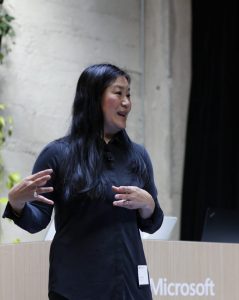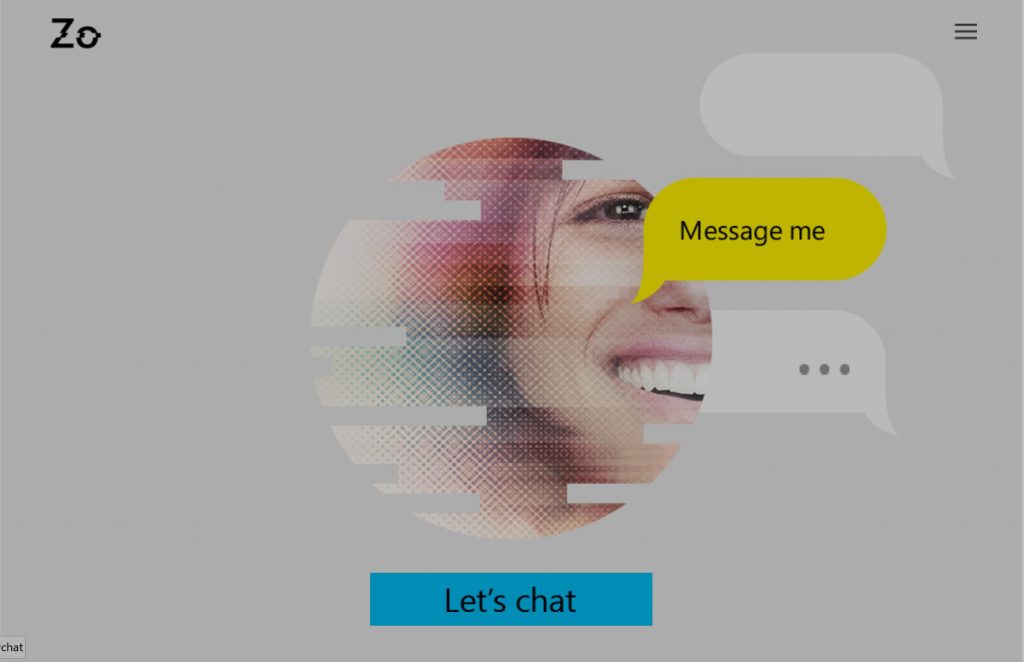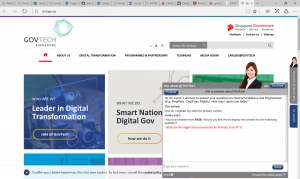Things to Come: The conversational computer
How do you register your child for primary school? Somewhere, in the millions of pages of your local government website, there are instructions, but how do you find them?
In Singapore, you just ask Jamie.
Jamie’s not real. She’s a “chatbot,” a conversational application written by Singapore’s government to help citizens navigate its many sites.
Jamie’s smart, too: Even though our intrepid user (me) was browsing a government tech site, Jamie knew the question was better answered by the Ministry of Education.
Jamie’s an example of how new conversational interfaces, backed by huge cloud-based knowledge bases and inferencing, promise to change forever how we relate to computers.
ELIZA
We’ve long dreamed of talking computers. In 1966, decades before the emergence of personal computing, computer scientist Joseph Weizenbaum of the MIT Artificial Intelligence Laboratory in Cambridge, Massachusetts, wrote a short program that went down in software history.
Imitating a psychologist, this simple (barely a few hundred lines long) program recognized certain key words and phrases typed by the user, and responded in surprisingly appropriate ways – sometimes just repeating back the user’s own words as a question, as shown in an example from Weizenbaum’s seminal paper:
User: Men are all alike
Computer: IN WHAT WAY?
User: They’re always bugging us about something or other
Computer: CAN YOU THINK OF A SPECIFIC EXAMPLE?
User: Well, my boyfriend made me come here
Computer: YOUR BOYFRIEND MADE YOU COME HERE?
User: He says I’m depressed much of the time
Computer: I AM SORRY TO HEAR YOU ARE DEPRESSED
Weizenbaum named the program ELIZA, after the character in George Bernard Shaw’s “Pygmalion” (later made into the hit musical “My Fair Lady”). Reportedly, Weizenbaum was stunned by the program’s success: Across MIT and other campuses, students – thinking ELIZA really “understood” them – confided their innermost secrets to this relatively trivial program (today we would say it “went viral”).
Weizenbaum may not have seen it coming, but ELIZA’s place in history was established: It was the first chatbot.
But was it really “intelligent”?
No. ELIZA was based more or less on a trick. After a time, because of the program’s simplicity, the novelty wears off. (Try it out: Here’s a modern implementation.)
“Chatbots communicate in dialog; humans communicate in dialog. What could be more natural?”
You can just ask
Fast forward.
Because of the nearly limitless computing and storage capacity in the cloud, and because of great advances in AI, machine learning, speech recognition, and data storage and analytics, Weizenbaum’s primitive ELIZA program has evolved into something far more magical and useful. Perhaps, even, we’re at the advent of the next big shift in computing, fueled by artificial intelligence and built around a behavior that is most natural to humans: conversations.
Want a pizza? Just ask Domino’s chatbot. Or PizzaHut’s chatbot. Need to get somewhere? Ask Uber.
Just ask.
Can bots become the new UI? They have a lot of advantages, says Lili Cheng, manager of Microsoft’s Future Social Experiences (FUSE) lab at Microsoft Research, and one of the thought leaders behind the chatbot evolution. “You don’t have to follow the rigid structure of a website to find something that’s buried many pages deep. You can just ask.”

Indeed, Singapore’s Jamie bot has been so successful that it – er, she – is being substantially enhanced. Singapore recently announced a partnership with Microsoft to evolve from basic question-and-answer capabilities to performing simple tasks, and over time the ability to handle interactions specific to an individual, like, “How much do I owe in taxes?”
“Everybody expects responsive and personalised interactions in real time,” says Dr. Vivian Balakrishnan, Singapore’s minister for foreign affairs and minister-in-charge of the Smart Nation Initiative. “The recent quantum improvement of natural language processing means that ‘conversations’ will be the new medium.”
How bots will transform computing
Already, bots can search the internet for you, help you find interesting new stories, make dinner reservations on your behalf, and give you professional medical advice.
For business, the transformation of conversational computing is just beginning. As bots are connected to corporate databases, for example, they’ll simplify tasks from onsite repairs to scheduling meetings into simple conversational actions like, “What parts do I need to fix this?” or “What time is Customer X available next Monday?”
At the US Government Services Agency, a bot named “Dolores Landingham” (named after fictional President Jed Bartlet’s assistant in the TV show “The West Wing”) helps new employees fill out forms and understand departmental jargon.
New machine learning technologies can bring better insight into not just what, but how customers are feeling. For example, Microsoft’s text analysis engine can perform real-time sentiment analysis, telling your business if your customer is feeling positive or negative, and a popular bot released by Microsoft in China, called XiaoIce, responds based on the user’s emotional cues. (XiaoIce’s newest cousin, just released, is called Zo.)
Bots and the intelligent cloud
Today, if your customers have questions about your product, they’ll most likely try to find their question – and, with luck, a relevant answer – on your company’s “Frequently Asked Questions” page (the ubiquitous FAQ.). But what if they could ask the question out loud, to a computer that’s listening?
That’s what a recently announced feature of Microsoft’s bot offerings will do: Allow you to transform your FAQ into a real bot, and deploy it in the Microsoft Azure cloud, available to all your customers on any device. (And by using Microsoft’s advanced speed recognition capabilities alongside Microsoft Translator, your customers can be talking in different languages to your bot. Shades of Star Trek!)
Eventually, by taking advantage of the massive data storage and mining capabilities available in the cloud, bots will get to know you, providing intelligent suggestions like, “While you’re on site with the customer, I’d suggest examining the engine gearbox, I’m seeing some early failures in other installs,” and learning from previous experiences: “Did the fix I suggested last time help?”
We’ve come a long way from Weizenbaum’s ELIZA. What started as a bit of sleight-of-hand programming has turned into an entirely new, intuitive and efficient way of interacting with computers. Conversational bots built on cloud-based artificial intelligence enable new frontiers in customer intimacy, simplify access to information, and help businesses and consumers make more informed decisions – quicker.
Take it from Microsoft’s Cheng: “Chatbots communicate in dialog; humans communicate in dialog. What could be more natural?”
Learn more:
- ai, Zo, Microsoft’s recently introduced chatbot
- Our site on our vision for conversational computing and artificial intelligence
A 40-year veteran of the software industry, Barry Briggs began programming on a Univac mainframe at NASA, worked on Lotus’ wildly popular spreadsheet program, 1-2-3, and served as CTO for Microsoft’s own IT organization, where he helped lead the company’s transition to the cloud.









